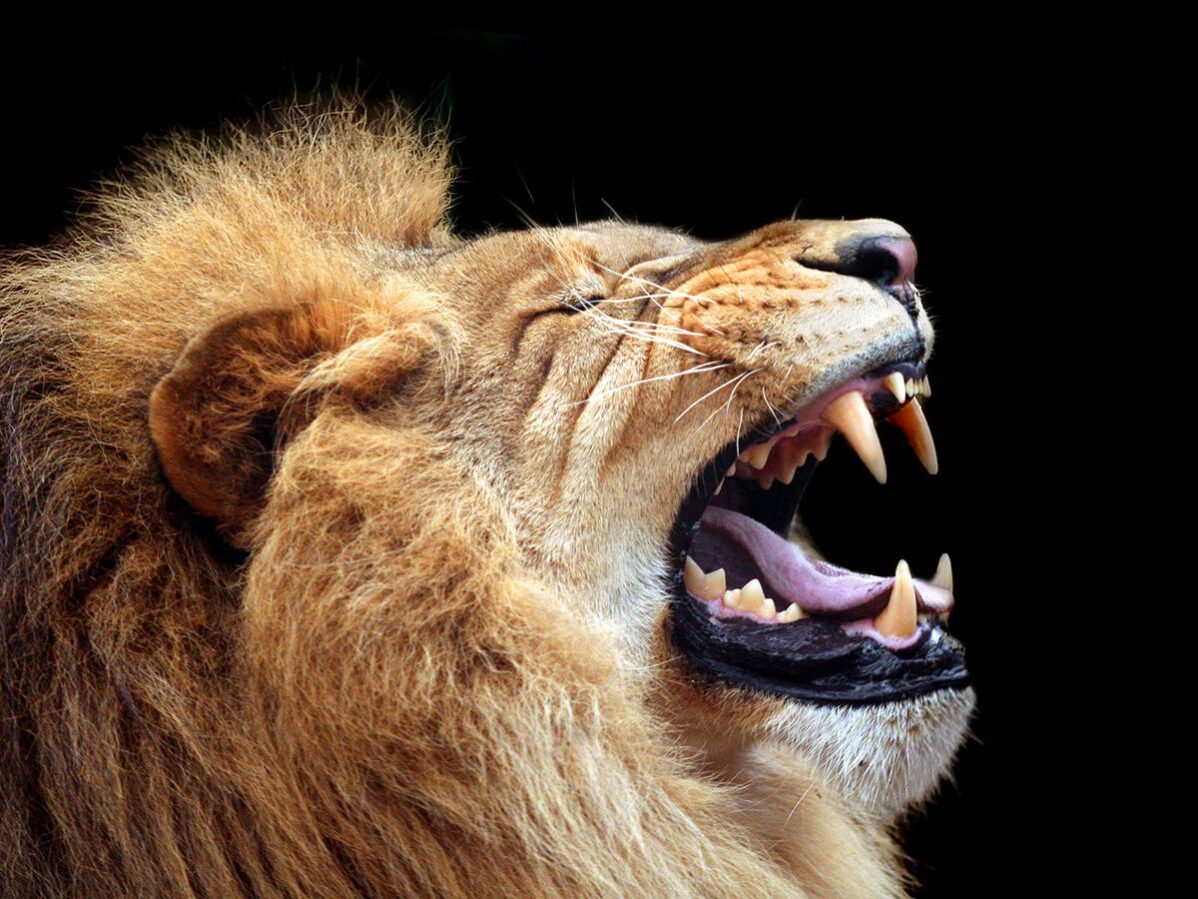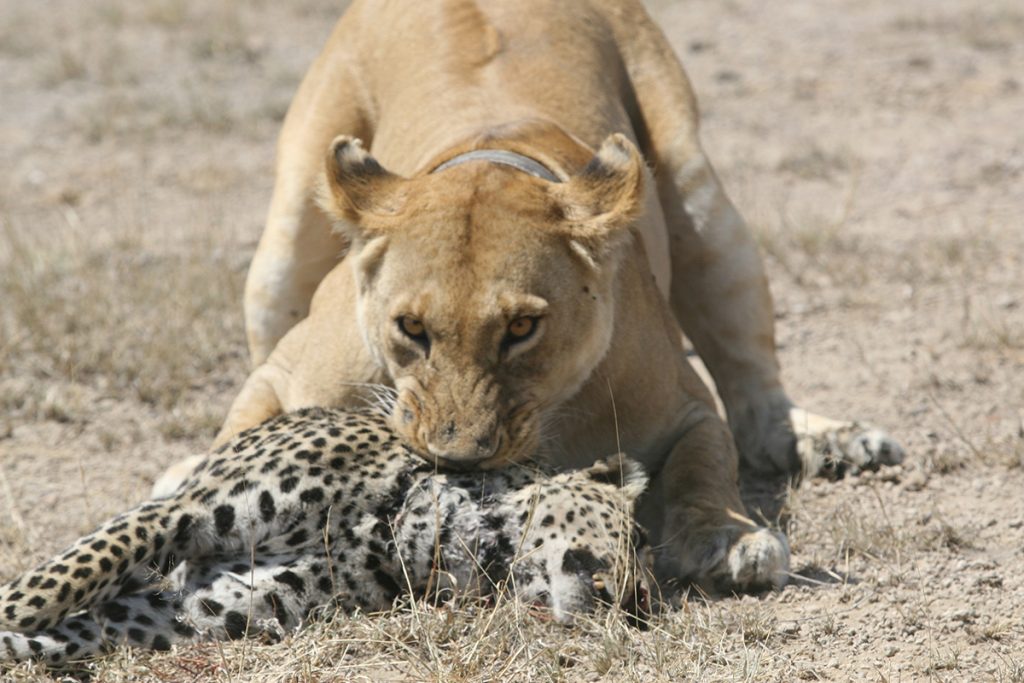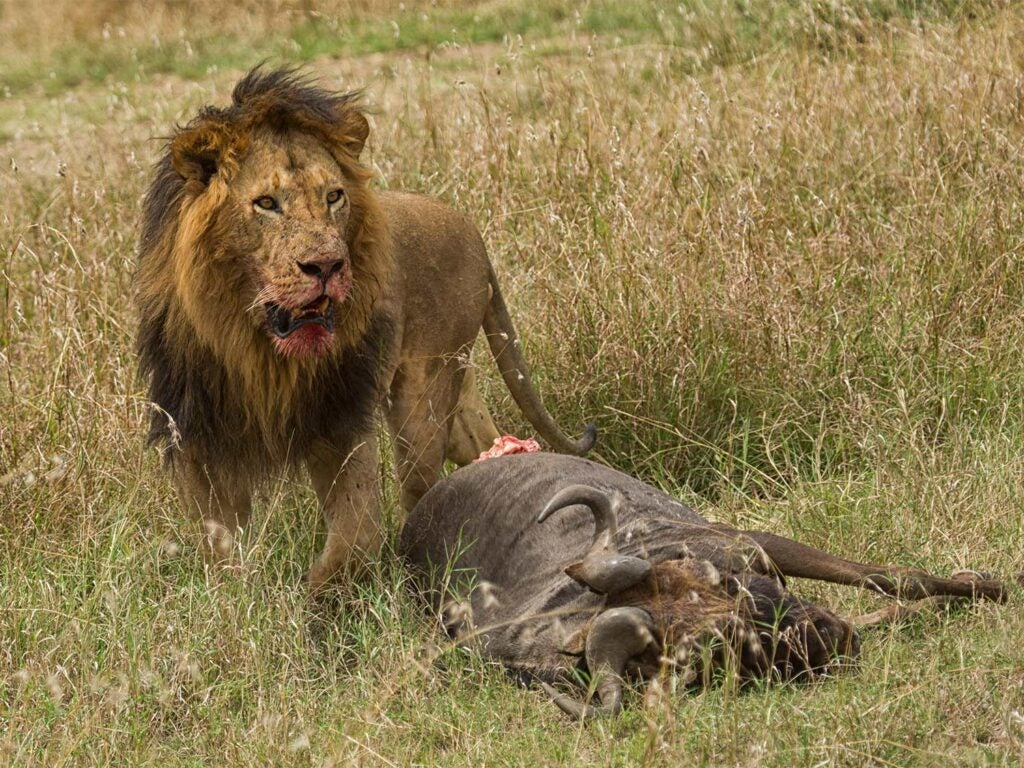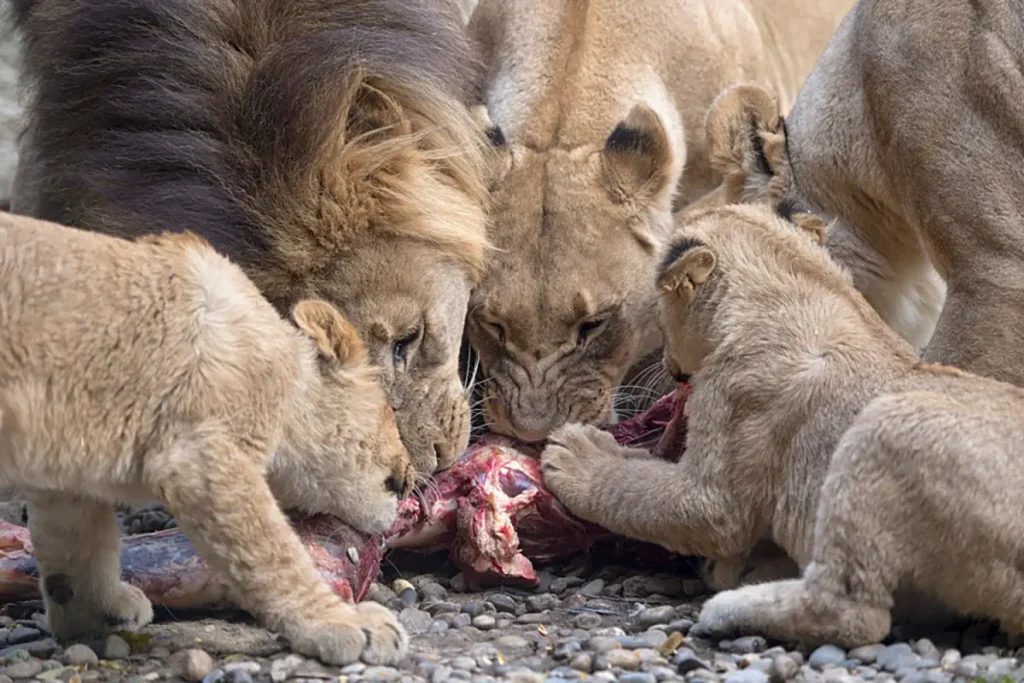
When you see a lion lounging in the shade on a hot afternoon, you might be tempted to think it is all about grace and majesty. And yes, lions do carry themselves like royalty. But hidden beneath that calm exterior is a force that defines their place at the top of the food chain. It is in the shoulders that tense before a pounce, the paws that pin down prey, and, most importantly, in the jaws that deliver the final blow.
A lion’s bite is more than teeth meeting flesh. It is physics, biology, and millennia of evolution coming together in one decisive moment. Ask anyone who has watched a lion bring down a buffalo and they will tell you that bite is not just powerful, it is precise.
Scientists measure bite force in PSI (pounds per square inch). For lions, it sits at around 650 PSI. That is less than a tiger’s or a jaguar’s, but still more than enough to crush windpipes, snap bones, and hold down struggling prey.
On paper, 650 PSI may not sound earth-shattering. After all, some crocodiles measure over 3,500 PSI. But the lion’s strength is in how it uses its bite. They do not rely on sheer crushing power alone. They combine it with speed, teamwork, and the element of surprise.
Think about it this way, if a jaguar’s bite is like a hammer, a lion’s bite is like a well-aimed spear.
The lion’s bite comes from powerful jaw muscles anchored to a robust skull. The canines, often over three inches long, are built for gripping and puncturing, not for chewing. Once those teeth lock in, the prey’s chances of escape are slim.
Unlike some predators that kill by crushing the skull, lions usually go for the throat. They bite down hard on the windpipe, cutting off air. In larger prey, they may clamp onto the muzzle, suffocating the animal while holding it down with their body weight.
It is not a quick kill for something the size of a buffalo or zebra. Sometimes it takes minutes, and during that time the lion’s jaw does not let go. That endurance is part of what makes their bite so effective.
In the African savanna, every hunt is a high-stakes gamble. Prey animals are fast, strong, and determined to survive. If a lion’s bite was weak, even for a second, the prey could break free, turn the tables, or injure the lion.
Bite force also plays a role in competition. Lions are social cats, living in prides, and a kill can attract other predators like hyenas or leopards. Holding onto a struggling prey animal while others try to steal it requires both strength and a refusal to let go.



Picture yourself on a game drive in the Serengeti. You spot movement in the tall grass, a lioness crouched low, muscles taut. She launches forward, her pride joining in. Dust rises, hooves pound the ground, and in seconds, she has her jaws around a wildebeest’s throat.
From your seat, you cannot hear the actual bite. What you notice instead is the stillness that follows once her teeth are in place. The wildebeest’s legs thrash less and less, the lioness’s body weight anchoring it to the ground. That silent grip is the bite force at work, invisible but final.
It is tempting to think the king of beasts must have the strongest bite in the animal kingdom, but that is not quite true. Here is a quick comparison:
Animal Average Bite Force (PSI)
Crocodile 3,500+
Jaguar 1,500
Tiger 1,000
Lion 650
Domestic Dog 250
Even though lions rank lower in raw PSI, they are still apex predators because of how they combine their bite with cooperation and strategy. No other big cat hunts in groups the way lions do.
In a pride, hunting is often a coordinated effort. Lionesses do most of the work, and their bite force is crucial in bringing down prey quickly enough to avoid injuries. Once the prey is on the ground, the first lion to clamp its jaws on the throat or muzzle usually holds that position until the struggle ends.
Males, while often less involved in the chase, bring sheer power. Their larger heads and stronger neck muscles give them an even firmer hold when needed, especially for larger prey like buffalo or giraffe calves.
Some people imagine a lion can bite through anything, even metal. That is not true. Their teeth are not made for chewing or breaking through hard shells like a hyena’s. Lions have relatively smaller jaw muscles than hyenas, who can crush bones with over 1,000 PSI.
What lions excel at is precision. They do not waste energy trying to bite through bone when cutting off air will do the job faster.
If you are hoping to see the lion’s bite force in action, keep these tips in mind:
Bite force is not only for hunting. Lions also use their teeth for grooming, carrying cubs, or asserting dominance during a fight. A warning bite between rivals may not break the skin but sends a clear message.
When cubs are young, a mother will carry them gently in her mouth, her jaws adjusting so the same teeth that can kill a zebra can also cradle her offspring without harm.
There is something humbling about watching a lion use its bite. It is not showy. It is not a dramatic snap like you might see from a crocodile. It is quiet, steady, and relentless. Once they bite, they commit, and that commitment often means the difference between eating or going hungry.
The lion bite force may not top the animal kingdom’s charts, but in the African plains, it is more than enough. It is the final chapter in a hunt, the silent moment where power meets purpose. Watching it in action, you understand why lions hold their place as apex predators, not because they are the strongest in every way, but because they use what they have with absolute mastery.
The next time you see a lion resting under a tree, remember that behind that calm gaze is a jaw built for survival. One that can hold, suffocate, and secure a meal that might feed a pride for days.

Lorem ipsum dolor sit amet, consectetur adipiscing elit. Ut elit tellus, luctus nec ullamcorper mattis, pulvinar dapibus leo.
GET A QUOTE
Get SEO metrics of any website or URL.

Explore Tanzania, Kenya, and Uganda in unmatched luxury.
Witness the Great Migration from exclusive viewpoints, relax in handpicked lodges, and savor gourmet dining under African skies.
From the Serengeti’s plains to Uganda’s gorilla highlands, every moment is curated for comfort and wonder.
Group Safaris
How we Work
Our Journeys
Flying Safaris
Conservation & Community
Contact Us
Honey Moon Safaris
Balloon Safaris
Family Safaris
Serengeti
Ngorongoro Crater
Maasai Mara
Bwindi Impenetrable
Volcanoes
Tarangire
Lake Nakuru
Kibale Forest
Lake Manyara
Arusha NP
Nairobi NP
About Friendly Safaris
How we Work
Our Journeys
The Team
Conservation & Community
Contact Us
Payment Details
Terms & Condition
FAQs
DMC
Start Planning